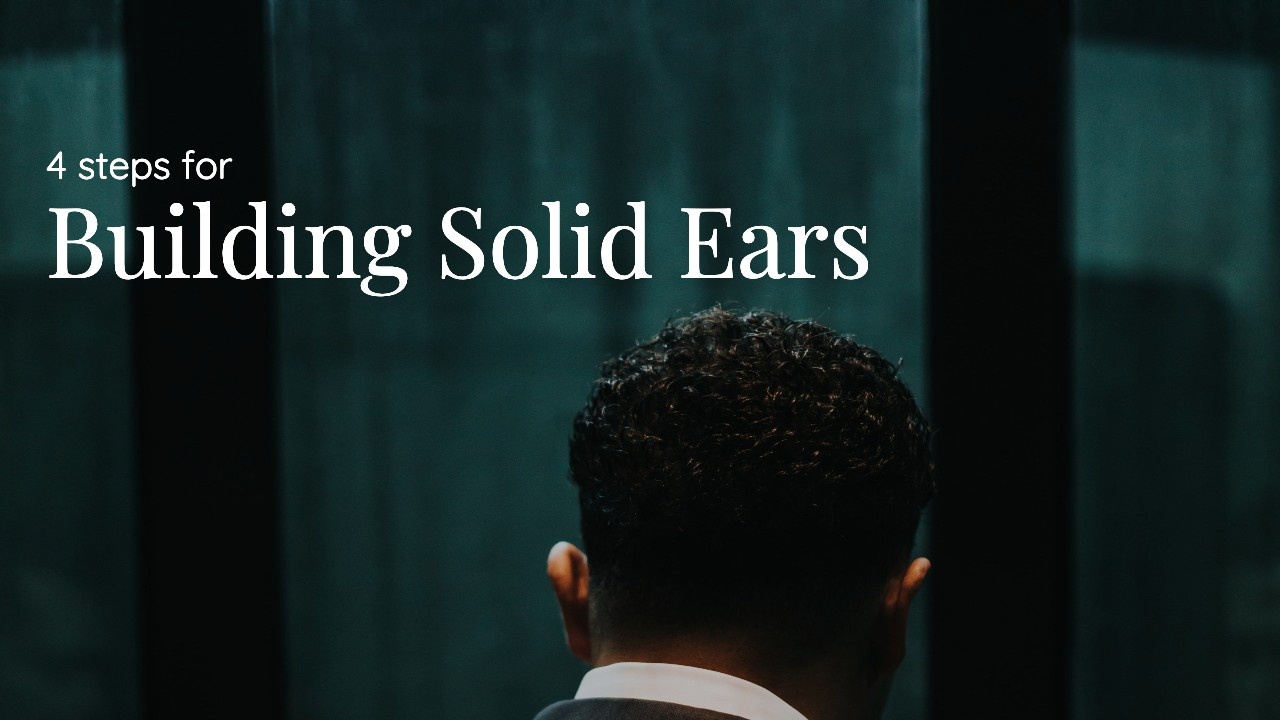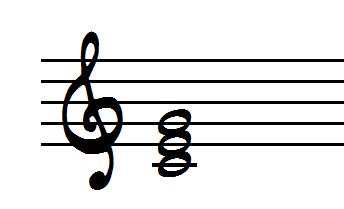
4 Steps for Building Solid Ears
May 04, 2018Ear Training for Jazz Players
A guest post by Brent Vaartstra
For years I’ve been getting emails from my subscribers asking me an assortment of related questions:
How do learn songs by ear?
How do I learn solos by ear?
How do I become a better improviser?
How do I play the music that I hear in my head?
When it comes down to it, all of these questions can be summed up with the desire to know how to play what you hear.
Throughout my research, I have become convinced that the fundamentals of ear training are pivotal for playing what you hear. There are many things you can do to develop your ears, but when you boil it down, the fundamentals of ear training are the kind of infrastructure we need for a strong foundation. They give you that extra advantage!
Why Is Ear Training Important?
No matter what style of music you play, whether you play rock, pop, latin, folk, hip-hop, or jazz like me, we all want to play the music we hear in our heads.
We want to be able to hear songs and immediately know what the chords are- no sheet music needed.
We want to be able to hear a solo or lick we like off of a recording and translate it to our instrument almost instantaneously.
We want to be able to hear a chord and know whether there is a #9, b13, or 11th in it.
Having Great Ears = Musical Freedom
That’s what this is all about: having the freedom to express anything you want to musically. Having great ears separates the amateurs from the experts.
This is where ear training comes in. Because this doesn’t just happen automatically as you probably already know. It takes practice! We need to train our ears towards the musical freedom we deserve.
4 Steps for Developing Killer Ears
The question I get time and time again is, how do I go about doing this? What exactly do I need to be working on?
It’s not a question of whether you should be doing ear training or not. It’s a question of how to do it in an organized way that will actually produce results.
What has worked for me and many others is breaking ear training down into important categories. Want to get on solid footing and propel your ears to the next level? Follow the 4 Steps for How to Play What You Hear.
These four steps build off of each other. If you have the first step down, the second step will be that much easier. Let’s jump in.
Step #1: Master Intervals
What’s an interval? The distance between two notes.
The most fundamental element of ear training is being able to distinguish whether a note is higher or lower in pitch from a given reference note.
Here’s an example of a major 6th ascending interval notated out (C to A).

Here’s an example of a minor 3rd descending (C to A).

Intervals are a great place to start because they help us identify whether a note is higher or lower in pitch, and by how much. In addition, they are the cornerstone building blocks for learning to hear chords.
Intervals Checklist
- Unison
- Minor 2nd
- Major 2nd
- Minor 3rd
- Major 3rd
- Perfect 4th
- Tritone
- Perfect 5th
- Minor 6th
- Major 6th
- Minor 7th
- Major 7th
- Octave
If you count these up, that’s a total of 13 intervals to learn. But there’s more than that. You need to learn what these intervals sound like ascending and descending, so that’s a total of 26.
Why Singing Is Important In Ear Training
What many ear training apps and courses fail to do is incorporate singing. Now, if you consider yourself a bad singer, don’t worry! Humming or whistling achieves the same thing. Any noise, really. The point is you are the one producing it.
Recognition is great. You hear an interval or chord and can identify it by name. But it’s an entirely different level to hear a reference note and be able to sing the interval or chord required.
Being able to sing proves that you can reproduce the pitch for yourself. It takes the ear training to the next level.
Step #2: Hear Chords
Once you have intervals down, you can move on to chords. Start with triads (Root-3rd-5th) and then move on to 7th chords (Root-3rd-5th-7th).
There are 4 qualities of triads: major, minor, augmented, and diminished.
There are 5 qualities of basic 7th chords: major 7, dominant 7, minor 7, half diminished, and diminished 7.
The main reason you want to be able to hear chords is it will help you when you go to improvise, and it helps you recognize chord progressions.
The idea is to take your knowledge of intervals and apply them to chords. For example, let’s look at a C major triad.

Formula: Root - major 3rd - perfect 5th
So the root to the major 3rd is a major 3rd interval. If you know what that sounds like you can recognize those first two notes and sing them.
The root to the perfect 5th is a perfect 5th interval.
You can even distinguish the relationship between the major 3rd and the perfect 5th. That relationship is a minor 3rd interval.

When training to hear chords, these are the three things you want to be able to do:
- Recognize the chord. Hear it being played and know it by name.
- Sing the arpeggio. Hear a reference note and sing the arpeggio up.
- Sing the chord tones. Hear a chord played and be able to sing the Root, 3rd, 5th, or 7th.
This ensures that you can truly hear all of the different chord qualities and types.
Step #3: Hear Chord Progressions
The next logical step is to hear and recognize chord progressions. If you can hear intervals, you can hear chords. If you can hear chords, then you can hear chord progressions.
Before training your ears to hear chord progressions, it’s important that you understand how to build them. If you don’t understand the Roman Numeral numbering system for chord progressions, I suggest checking out a lesson called How to Harmonize a Major Scale With 7th Chords.
Why should you learn to hear chord progressions? Here are three reasons:
- They are the platform for improvisation. What do we improvise over? Chord progressions.
- They are another step further into critical listening and building your ears.
- Hearing them is essential for learning to play songs by ear.
So which chord progressions should you memorize? There are so many of them, and I would suggest learning some pop and rock ones, but here are some basic jazz chord progressions to start working on:
Basic jazz chord progressions with 7th chords:
Major ii-V-I (Dmin7-G7-Cmaj7)
Minor ii-V-I (Dmin7b5-G7b9-Cmin7)
Major I-vi-ii-V (Cmaj7-Amin7-Dmin7-G7)
Minor i-vi-ii-V (Cmin7-Amin7b5-Dmin7b5-G7b9)
V7-IV7-I7 (G7-F7-C7)
Step #4: Translate What You Hear to Your Instrument
So far steps 1-3 have had nothing to do with playing your instrument, except maybe for practicing recognition and singing. But step 4 is all about developing the relationship between what you are hearing in your head and your instrument.
How do you do this? Here are a few suggestions:
- Learn licks and lines from recordings by ear.
- Learn entire solos by ear.
- Learn songs by ear.
- Try to play popular folk songs & nursery rhythms by ear.
- Practice melodic dictation.
Melodic dictation is one I suggest to my students because it’s kind of like the sight reading of ear training.
The idea is you hear a short melody or line being played and you try to reproduce it on your instrument as quickly and with as few tries as possible. You don’t want to memorize it, you just want to get it and move on to another one.
You can do this by practicing with a friend, or put on a record you like and try to learn parts of a solo in little chunks as quickly as possible.
Ear training is something all musicians should spend some time doing, and if you follow these 4 important steps, I guarantee you will be setting yourself up for musical success!
Brent Vaartstra is a professional jazz guitarist and educator living in New York City. He is the head blogger and podcast host for learnjazzstandards.com which he owns and operates. He actively performs around the New York metropolitan area and is the author of the Hal Leonard publication "Visual Improvisation for Jazz Guitar."









